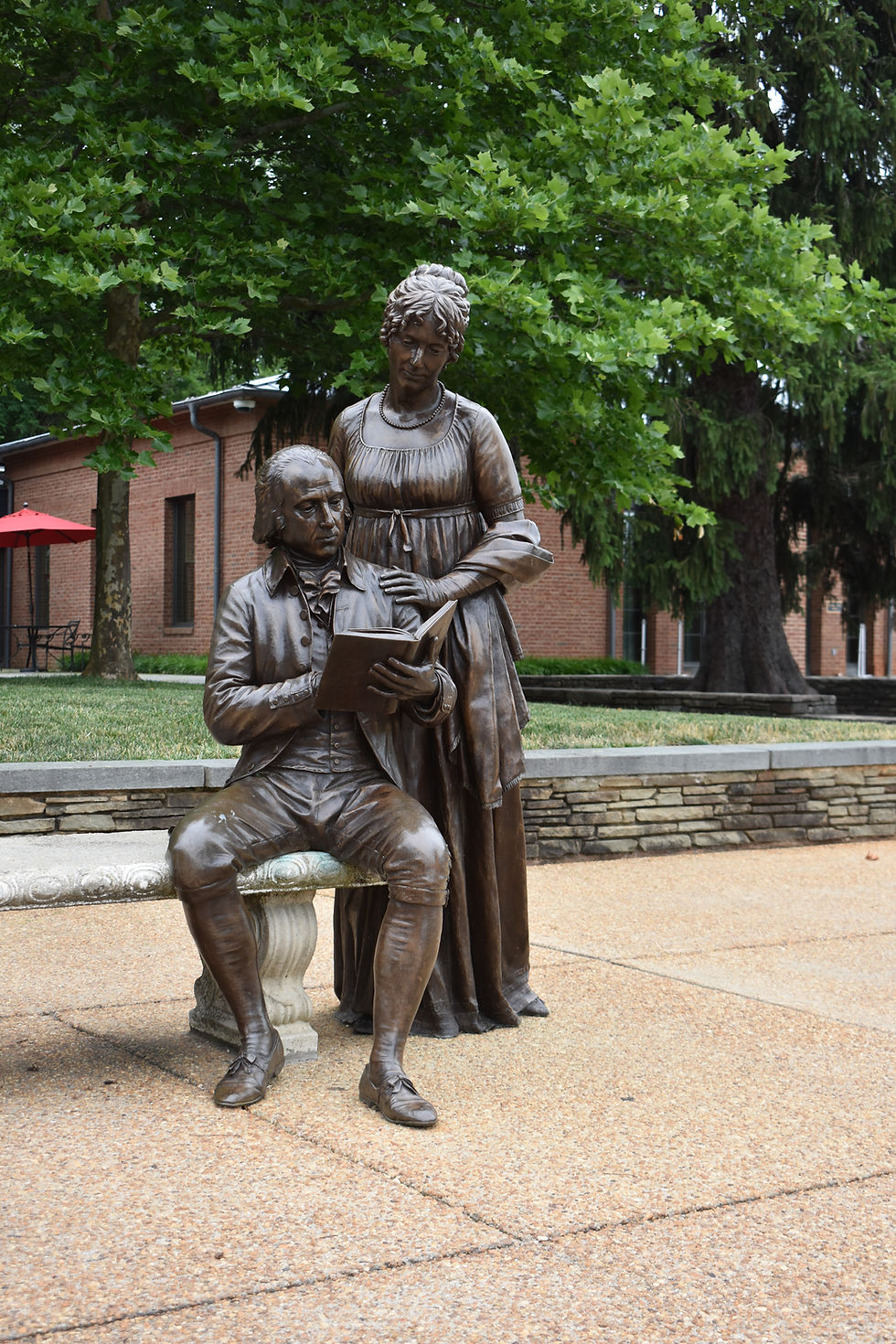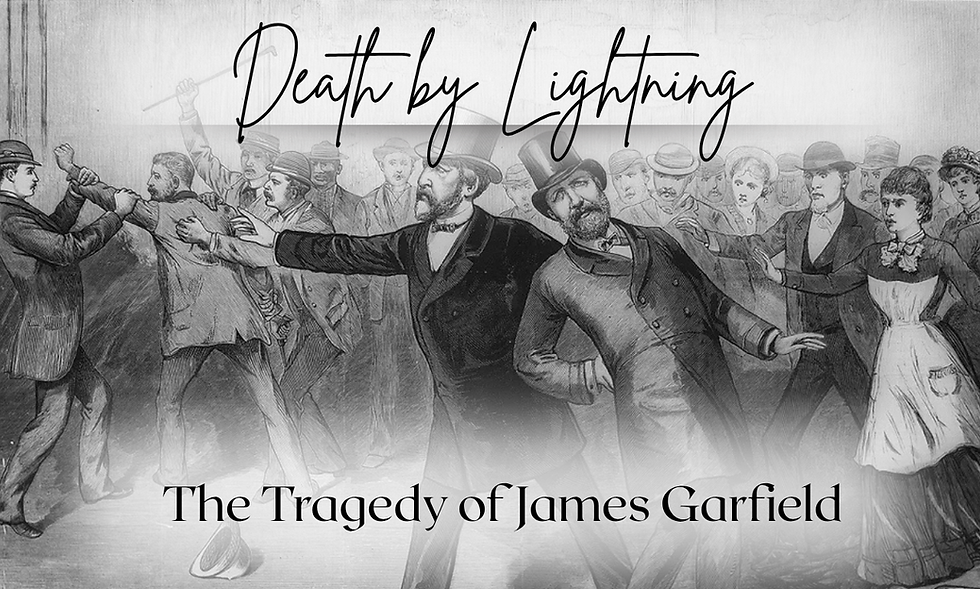Everyone Loves Mrs Madison
- Samantha Wilcoxson

- Mar 9
- 4 min read

When Senator Henry Clay announced that "Everyone loves Mrs Madison," Dolley responded, "Because Mrs Madison loves everybody." This was the attitude that President James Madison's wife brought to Washington, and it was quite different than the aristocratic precedents set by Martha Washington and Abigail Adams.
Before she was Mrs Madison, Dolley Payne was born 20 May 1768 in the small Quaker settlement of New Garden (modern day Guilford County, North Carolina). The family did not remain there long enough for little Dolley to retain memories of the place, and she always thought of herself as a Virginian, even after moving to Philadelphia in 1783 at age fifteen. Anthony Morris, who became a lifelong friend of Dolley's, wrote, 'She came upon our comparatively cold hearts in Philadelphia, suddenly and unexpectedly with all the delightful influences of a summer sun, from the Sweet South . . . .and she soon raised the mercury there in the thermometers of the Heart to fever heat.'
Quaker she may have been, but quiet and modest she was not. Dolley was obsessed with many fashions that she was not permitted to wear, and she would document what she saw around the city in her diary. She wore the plain clothes required by her mother but still gained attention with her dark hair, blue eyes, and friendly demeanor. This charm would serve her well years later when she became First Lady.
Dolley's father had manumitted his slaves before moving to Philadelphia. Not able to farm successfully without their labor but devoted to Quaker beliefs that it was wrong to own another human being, John Payne hoped that the city would offer other opportunities for supporting his family. Unfortunately, tragedy made frequent visits upon the Paynes. A baby, named Philadelphia for their new home, died shortly after birth, and oldest son, Walter, was lost at sea. When Payne's starch business went bankrupt, he looked for suitors to take Dolley off his hands.
Among Dolley's many admirers, her father thought John Todd Jr the best choice. A lawyer six years Dolley's senior, Todd had shown interest in her for some time. Whether he was Dolley's first choice is unknown, but letters between them indicate love during their marriage if it was not present before. They were married 7 January 1790. The young couple moved into a home that still exists at the corner of Fourth and Walnut Streets in Philadelphia.

A son was welcomed on 29 February 1792 and named John Payne Todd to honor both his father and grandfather. Little could Dolley have imagined then that this little boy would cause her much trouble in the coming years, but her love for him never wavered.
In the summer of 1793, another son, William Temple Todd, was born. Then Yellow Fever struck Philadelphia, killing about 5000 people or approximately 10% of the city's population. The young Todd family did not escape the epidemic, and Dolley lost both her husband and infant son on 24 October 1793. Dolley went to her mother, who had opened the family home as a boarding house, while she grieved and attempted to settle the estate of her husband and his parents, who had also died of the fever.
At her mother's boardinghouse, Dolley was introduced to Aaron Burr, attorney and senator, who assisted her with her legal battle and became godfather to Payne, as Dolley's remaining son was called. Burr also introduced Dolley a friend. When forty-three-year-old James Madison met the young widow, the supposedly confirmed bachelor fell in love.

By marrying outside the faith and within a year of her late husband's death, Dolley knew she was relinquishing her place in the Quaker church. From 15 September 1794 when she wed the Great Little Madison, she never expressed any regret. Dolley embraced the fashion and society that she had longed for but been denied a place in.
When James Madison was elected the fourth president of the United States in 1809, Dolley was well prepared to define the role of First Lady in a way her predecessors had not, opening up the White House to any who wished to visit and charming political rivals into civility - at least long enough for dinner. Her parties were so well attended, they were called squeezes. Dolley made everyone feel welcome.
When writer Washington Irving attended one of Dolley's squeezes, he noted the room was crowded with "interesting men and fine women" and that "Mrs Madison is a fine, portly, buxom dame, who has a smile and a pleasant word for everybody."
After Madison's presidency, the couple retired to the Virginia family plantation, Montpelier. This home contained the library both James and Dolley loved as well as the study where James had drafted the Constitution of the United States. James died there on 28 June 1836 after declining physician offers to extend his life that he might join the distinguished list of Founding Fathers who had died on the 4th of July.

Dolley struggled on her own with debts of her own and those of her son. She sold enslaved servants, including at least one man who James had expected her to emancipate after his death. Eventually, Dolley sold Madison's Montpelier and moved back to Washington, where she was still considered a welcome, vibrant member of society. She lived in the city until 1849 and was initially buried there. Dolley was reinterred next to James at Montpelier when the estate was developed as a historic site.
It is believed that the term First Lady was used for the first time at Dolley Madison's funeral in 1849. Sometimes called the Queen of America, Dolley Payne Todd Madison had left behind her Quaker roots and forged a unique path of her own.
Read more about Dolley Madison in Women of the American Revolution!
_edited.jpg)




Comments